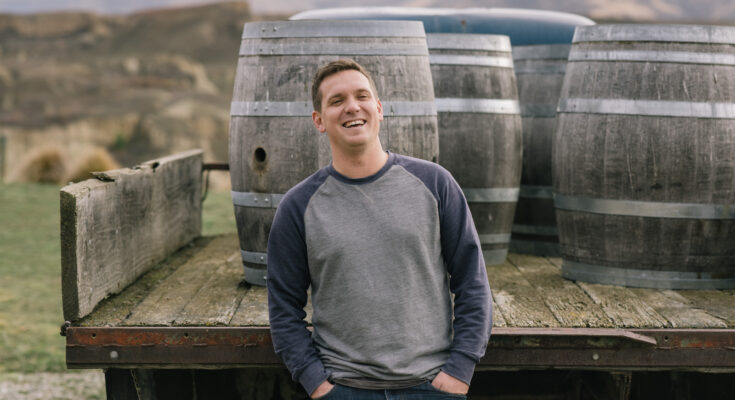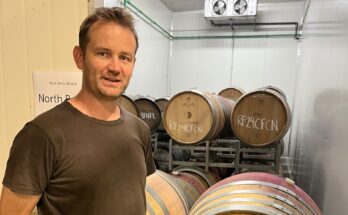I’ve taken my trusty Pinot-guru Curt Thomas along on a trip to Central, and we’re at the iconic Mt Difficulty Tasting Room on Felton Road in Bannockburn, for a bite to eat, and a pre-lunch tasting and chat with winemaker Greg Lane.
Greg Lane: What are you tasting?
WineFolio: I went for the Chardonnay, and Curt is on the Long Gully Chenin Blanc. I have been here before and chatted to Matt Dicey before having a very nice lunch last time – we’re repeating that trick again today, before heading over to the Calvert Vineyard.
Where were you before you took the hot seat here – it was Amisfield wasn’t it? I’d been trying to track you down when you were there.
GL: Yes, I’ve had a few jobs since coming over from Adelaide. New Zealand is home for me now. I was in Marlborough with Foley Wines for a bit, and then came down to Central. When Matt finished up it gave me a good opportunity here. I’m pretty happy to end up at this famous winery – it’s awesome.
WF: We don’t hear quite so much about Mt Difficulty in Auckland as we perhaps used to? I know people couldn’t travel down here for months, during the pandemic. Did the restaurant close completely during that time?
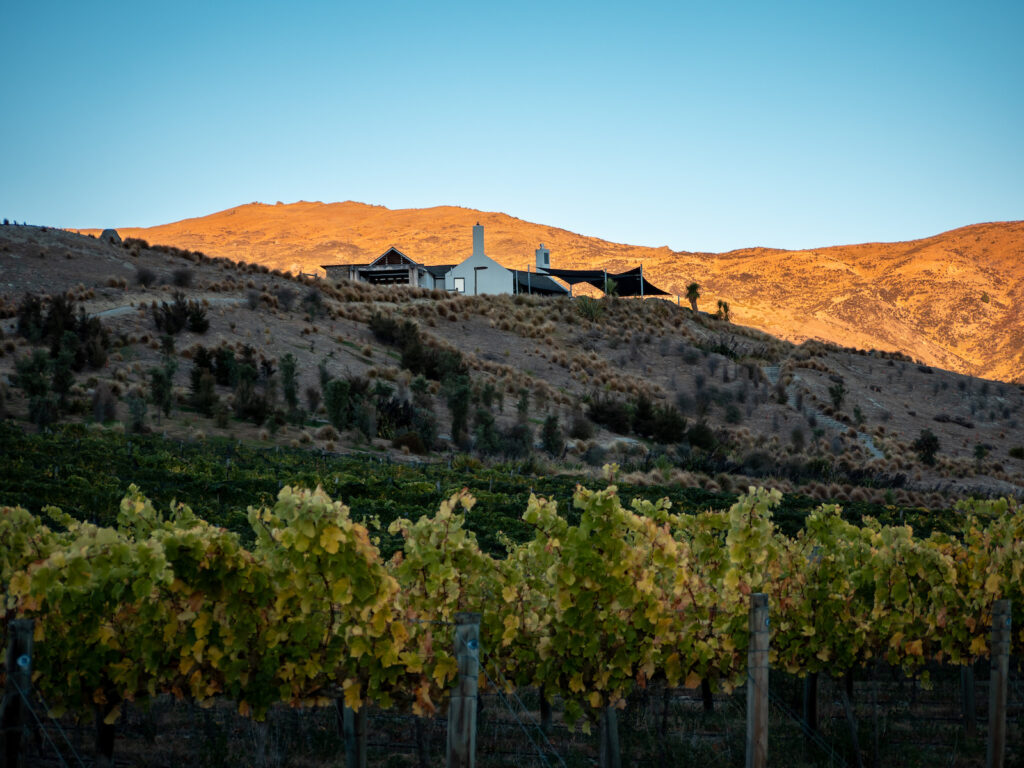
GL: Well, New Zealand is still our biggest market by a long way. It did, but at least it came back. And we’re about to build a whole new room starting in May next year.
WF: I’m sure I heard about that. Because on a beautiful day it seems like there’s lots of room here, but on a not-beautiful day, and everyone inside, it gets quite tight for space.
GL: Yes, it can be a cosy tasting room. And we have to be mindful to offer different types of experiences. Kiwis sometimes want something a little more relaxed – so a glass of wine and pizzas on this side; and keep the restaurant side separate. The other thing we’ve done in terms of adapting, is to get our online sales right – and as a group we’ve worked to get that right.
And the development in Martinborough is still going. I was up there two weekends ago, and they’ve got to the stage of lining the inside… so it is up and out of the ground. They’re talking about April 2023. It looks awesome, and it is great for the region.
There’s a little bit of Chenin in Central Otago, and I think it is a great variety for down here. It’s in that off-dry style but retains good acidity. It is from Long Gully just down the end in Bannockburn. The Sauvignon is primarily from Bannockburn as well – all hand-picked and wild-fermented in tank. We get fruit purity but retain texture. They tend to be a little more tropical, with a little more hang time. Good weight and texture, and I think we get a nice edge from the lees contact.
For our rosé, it is all Abel clone Pinot, and it is from our Swansong vineyard down the end of Felton Road. Because it is so close to Mt Difficulty at the end of the gorge it loses the sun quite early. So west-facing but a fairly cool site and beautiful for rosé. All hand-picked and wild fermented in barrel. Looking for texture with a nice lift in the fruit, but it is that weight from the barrel ferment that makes a difference.
WF: You have a vineyard up in Bendigo don’t you? We were up at Prophet’s Rock yesterday and I was trying to recall what the other vineyards were.
GL: Yes, the Ghost Town vineyard. It is next door to Prophet’s Rock. It’s an amazing view, and quite different even though it’s only fifteen minutes down the road. One of the reasons I came back to Central Otago was the fact that you have such varied sub-regions to make wine from. And in Bannockburn it is all about the different soil types in a very close area. We’ve got the four single vineyards – Pipeclay, Mansons Farm, Long Gully and Target Gully. (Points at a map) – there to there is about 200 metres – that’s on clay, that’s on gravel, that’s on deep loam, and that’s alluvial.
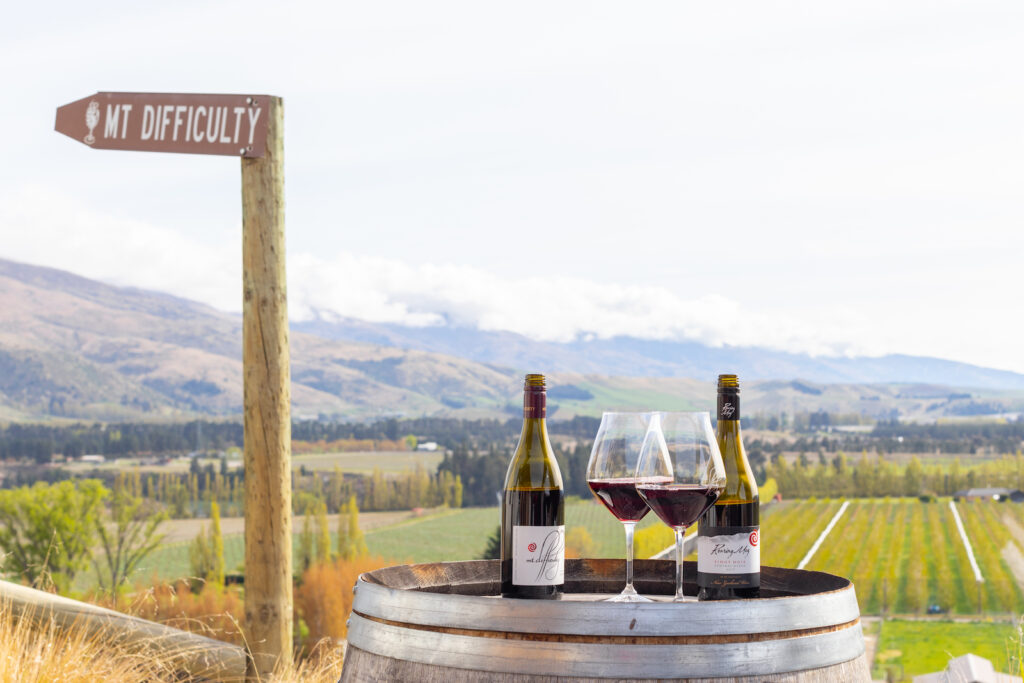
WF: Is there a pressure – or more pressure – to perform in a group like Foley Wines? They want to have those tiers of product from your ‘Roaring Meg’ up to the $100 single vineyard wines and that scope; but is there a pressure to deliver all those price points, varietals and medals? Are you quite marketing or strategy-led… or can you just make the best wine you can and hope that people will like it?
GL: What we work really hard on, as a group, is establishing a similar language about what we think good, or quality, wine is. The medals and the awards and stuff are probably more important at the entry-level, supermarket wines. One of the important things with Foley as a company is that we don’t behave like a classic corporate – with an overarching winemaker and they determine what everything is going to be like. We’ve got five wineries with five winemakers, and we’ve got separate viticultural teams. All the back of house – bottling and warehousing is all combined.
WF: So you’re getting the benefits of scale where you need it, but you’re also being left alone where that is needed?
GL: It’s a nice spot to be in. Keeping that individuality is part of the story.
I’ll grab a Pinot for you – the Bannockburn 2020 is basically our flagship wine – it’s what we’re known for. Portions of whole bunch in the ferment is probably around 30% and in the final blend it often comes out to be around 10%.
WF: So whole bunch is something you’re into, personally?
GL: I am, yeah. I’ll probably play around with it a little bit more. I like the spice and the perfume, and that ethereal lift that you get with whole bunch. That’s just one little thing that I’ve been working with. All the different ideas are important because it gives points of difference, interest and individuality to the wines, for sure.
WF: And do you think it takes a while, in the job, to start to understand it all – how what you’re know working with all comes together?
GL: I was listening to a podcast by Dominique Lafon from Burgundy, and he said it takes ten years to understand a vineyard. You need to see a few different vintages a couple of times before you know it. This wine comes from across Bannockburn. It probably ends up being about 70% Felton Road and 30% Cairnmuir Road. The Felton Road site tends to be a lot fleshier, with finer tannin and more red fruit spectrum. Whereas the Cairnmuir site is more schist-based soils – and not dissimilar to Bendigo type soils.
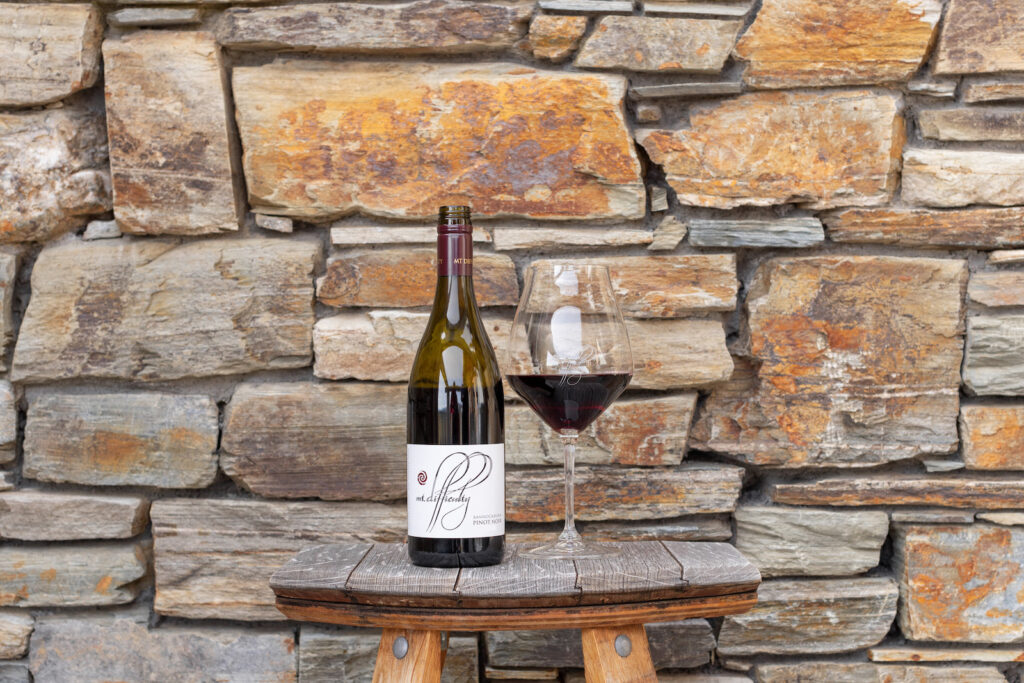
Bannockburn was never heavily glaciated. The Hawea glaciers came to about Northburn, but this area was never really mixed up by the glaciers. There are different stratas of clay – and if you see the blue-gray clay – that’s clay from Lake Manuherikia – the historic lake that covered all of Central Otago. The gold that people came to mine was in the top layers, and in the sluicings you’ll see these towers where they knew if they got to the blue clay they had gone too far.
So certainly a story much more about clay – a more fertile soil. And the Cairnmuir site can be more blockier, more structure and tannin. A bit simpler in their fruit profile, without the complexity of Felton. The cool 2020 vintage brings more acidity, and I really like that. The cool vintages tend to be the best for us, with that nice acidity, more restraint on the fruit and they age really well. A lot of people were worried about how light in colour they appear, but 2017 was also light when it was bottled. And this is the Ghost Town, from Bendigo. There’s some real power and texture there. Lovely cola bottle, dark flavours and rockier tannin that you get from that schist.
WF: Wow, it tastes of the place doesn’t it? Rosehip, baked earth, root beer.
GL: Also – this is a Long Gully 2017. Our oldest vineyard, which was the third vineyard planted in Bannockburn, after Felton Road and Olssens. It was pretty scrappy down here – just a few sheep and some briar before they put vines in. Long Gully for me is always the most even and has the best flow in terms of those single vineyards. It has that classic Bannockburn fruit, in the cherry spectrum, with good flesh on the palate and fine tannin. Even from a young age they seem to be quite locked-in together and quite seamless. We do a barrel selection basically and it gets another three months in oak. And about 20% new oak.
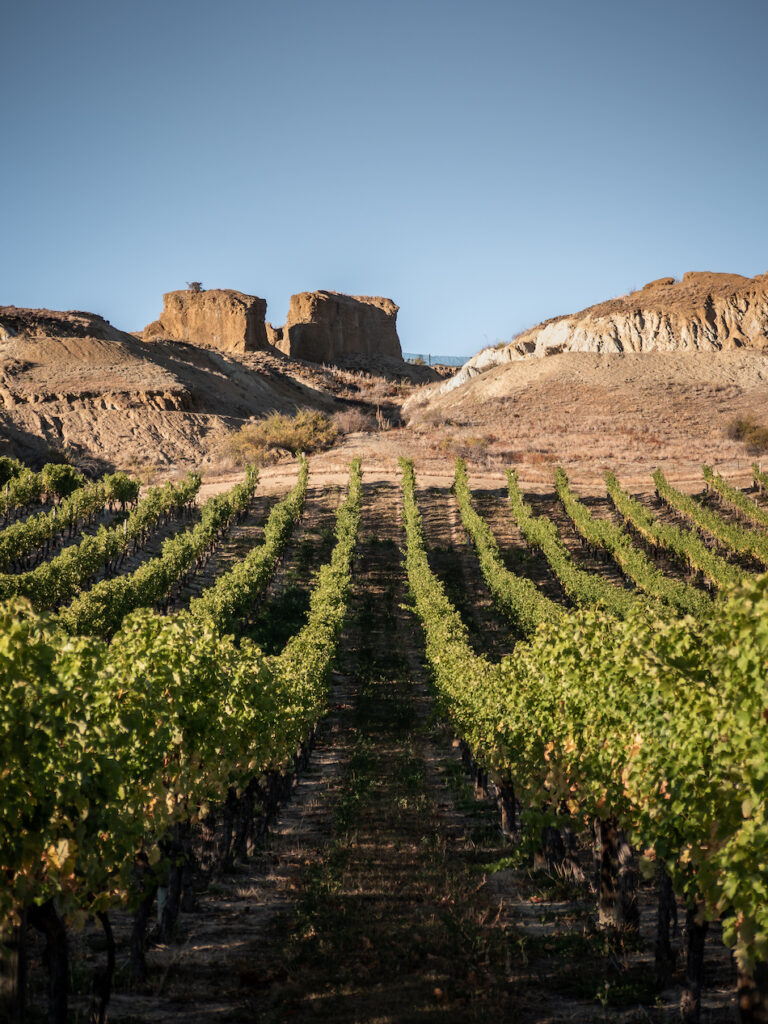
Finally, Manson’s Farm 2016, so back to a warmer, earlier sort of vintage. Manson’s Farm is not far from Long Gully and it is the boniest soil I’d say we have. The vines are super low-yielding, and it always seems to have brooding fruit and lots of structure. For me, this is like our Pommard, with a firm, iron-like tannin. In a cooler year you might get a bit of darker, violet florals. This one has a dusty Nebbiolo thing, which I like. If they have the 2015 on the list in the restaurant – have that!!

